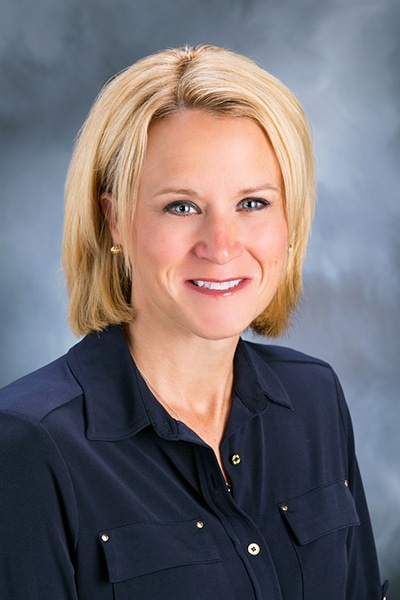In the trucking industry, the drivers are the lifeblood, ensuring the safe delivery of materials and containers along the nation’s highways and byways. Recent changes in state laws governing wages and hours for truck drivers, though, have created big headaches for interstate trucking carriers. And interpretations of these laws and how they interact with federal regulations are so unclear that “nobody knows how to comply,” says Lisa Stephenson, general counsel of CRST International, the Iowa-based trucking hauler that serves the forty-eight contiguous US states.
The conflict between state laws and federal regulations has in fact created such an issue for trucking companies and their operational rules for their drivers that it has opened the door for lawsuits. The industry has responded with a full-court press, appealing to federal regulators and lawmakers for relief. Stephenson herself has been spending many hours on the effort, and though it’s not what she expected when she joined CRST, she has ultimately been successful.

Having formerly worked in private practice for a firm with a longstanding relationship with CRST, Stephenson was familiar with the company when she came aboard. At that point, she’d primarily handled its employment law work, but in her time as general counsel, she has had to dive into the intricacies of interstate commerce law. “It’s been a steep and swift learning curve,” she says.
Many of the challenging decisions she faces stem specifically from conflicts between state and federal regulations pertaining to the number of hours drivers can be on the road before they have to take a break. California, for example, has more stringent rules than the US Department of Transportation. When a trucker’s route is completely within that state, it may be that the state’s hourly limits apply. But when it comes to interstate routes, there is often a patchwork of different state laws and federal regulations to factor in.
California contends that its laws pertain to all California residents that drive in the state, even if their routes venture outside of the state’s borders. “They might be California residents, but if we look at the miles they drive, they may spend just eight percent of their time in California,” Stephenson says. “It they drove four hours within Nevada, do you start over when you reach the California border?” Numerous lawsuits have been filed to litigate such details, but the court rulings are not always helpful or instructive when it comes to operational details.
In the meantime, CRST drivers are empowered to take safety matters—including when to rest—into their own hands. “CRST takes the position that they may take a break anytime they need a break,” Stephenson says.
By contrast, mandatory breaks at certain times take away truckers’ ability to control their own schedules, and this can create other problems. For example, there is a dire shortage of parking areas for truckers, Stephenson says. In the wide-open spaces in large swaths of the country, when a mandatory break is prescribed, the driver may not be near a safe location to park, she says.
Trucking industry trade representatives from organizations such as the American Trucking Associations are working to address these issues, and Stephenson works with them to help develop their strategy. “We share our experiences and perspectives on safety and operational compliance, including the legal and financial impact,” she says. In addition, she has made her company’s case directly to members of the US House of Representatives.
She wants to help enact change not just for CRST but for its drivers. “Disgruntled drivers have become a cottage industry for the plaintiffs’ bar,” she says. It’s become an expensive headache that enriches lawyers but does not always effectuate meaningful and positive change for the drivers.
To counteract this, CRST is adopting a proactive strategy to reduce the number of lawsuits. “Drivers are our biggest asset,” Stephenson says. “We’re taking a hard look at the root causes of lawsuits. If they are disgruntled, what has gotten them to that point? To the extent that we can, we want to figure out how to relieve the pain points for drivers. We want to understand their opportunities and challenges and make sure drivers are valued, appropriately compensated, and feel safe.” Fewer disgruntled drivers will mean fewer lawsuits, regardless of the regulatory climate, she adds.
It’s a sound risk-management strategy that’s well worth pursuing while courts sort through the lawsuits surrounding regulatory clarity and lawmakers consider reforms. Meanwhile, Stephenson will continue to advocate for CRST and the trucking industry as a whole, speaking with decision makers who can hopefully help relieve a critical issue that’s having a major financial impact nationwide. It’s impactful work that will contribute directly to her company’s future success.
***
Jenner & Block:
“Working with Lisa Stephenson is a true professional pleasure. She is a whip-smart and sensibly pragmatic leader with intuitive business sense and outstanding judgment. She brings years of private firm litigation and commercial experience with her as she guides and counsels CRST’s executive ranks through the complex and highly competitive challenges of the modern trucking and overall transportation industry. In short, Lisa Stephenson is top notch in every respect and well deserves this special recognition from Modern Counsel.”
–John H. Mathias, Jr., Partner
***
Preti Flaherty:
“Lisa is an excellent attorney, an effective leader and a great partner and collaborator. It is a pleasure to work with her as outside counsel.”

